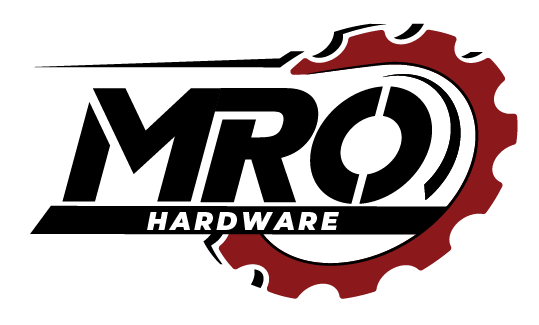The Maintenance, Repair, and Operations (MRO) industry faces a complex landscape filled with both challenges and opportunities. One of the most pressing challenges we encounter is parts availability, which can significantly impact efficiency and operations. As MRO providers, we must ensure that the right parts are on hand when needed, preventing costly delays and downtimes.

Technology integration follows closely behind as an area that demands our attention. The integration of new technologies can streamline processes and improve visibility into global inventories. Without effective tech solutions, we risk inefficiencies and data silos that can hinder performance and decision-making.
Labor shortages are another critical issue that impacts our industry. We need skilled workers to maintain high standards and meet growing demands, but finding and retaining talent continues to be a significant hurdle. Investing in workforce development and training becomes essential to overcome this challenge and ensure the long-term success of our operations.
Major Challenges Facing the MRO Industry Today

The Maintenance, Repair, and Operations (MRO) industry is encountering several significant challenges. These include supply chain disruptions, labor shortages, increasing costs due to inflation, and issues with data integration. Addressing these challenges is crucial for maintaining efficiency and profitability.
Complex Supply Chain Disruptions
Supply chain disruptions continue to pose serious issues for the MRO industry. The interconnected network of suppliers, manufacturers, and service providers can be sensitive to global events like geopolitical tensions or natural disasters. These disruptions can lead to delays in the procurement of critical parts, impacting our ability to deliver timely maintenance and repairs.
The MRO supply chain involves multiple stakeholders, and a lack of transparency can exacerbate delays. Implementing robust tracking systems and enhancing communication across the supply chain can mitigate these challenges. We need to focus on building resilient networks by diversifying suppliers and employing predictive analytics to forewarn potential disruptions.
Labor Shortages and Skills Gaps
Labor shortages are impacting the MRO sector significantly, leading to difficulties in meeting rising demand. The industry is also experiencing a skills gap, with fewer qualified professionals entering the workforce. As older employees retire, filling these roles with skilled technicians becomes ever more challenging.
Training programs and partnerships with educational institutions can help bridge the skills gap. We should also consider offering competitive wages and incentives to attract and retain talent. Strengthening our workforce is essential for sustaining operational efficiency and avoiding interruptions in service delivery.
Escalating Costs and Inflation Pressure
The MRO industry is not immune to escalating costs and inflationary pressures, which affect everything from raw materials to wages. Managing costs effectively becomes critical to maintain profitability. Cost control measures need to be strategically implemented to counteract these pressures.
To navigate these challenges, we need to focus on improving procurement strategies and cost management practices. Leveraging technology, such as AI-driven analytics, can optimize inventory management and improve cost savings. Establishing clear KPIs for cost management can also aid in maintaining financial health.
Data Silos and Lack of Integration
Data silos represent a major hurdle, preventing us from achieving full operational efficiency. Different systems and platforms often don’t communicate effectively, hampering decision-making processes. The lack of integration can lead to fragmented insights, making it difficult to analyze overall performance.
To tackle this, we should implement integrated data systems and platforms to ensure seamless information flow across departments. Utilizing cloud-based solutions and encouraging data standardization practices can help unlock insights and streamline operations. By breaking down these silos, we pave the way for more informed decision-making and improved performance.
Tackling Challenges: Practical Solutions for MRO Success
To enhance operational efficiency in the MRO industry, it’s crucial to adopt strategies that focus on digital transformation, predictive and preventive maintenance, supplier collaborations, and sustainability. Implementing these strategies can significantly improve turnaround times and decision-making while reducing the carbon footprint and ensuring operational success.
Leveraging Digital Transformation and Automation
We can revolutionize MRO processes by embracing digital transformation and automation. Utilizing digital technologies such as data analytics and artificial intelligence, we enhance our decision-making capabilities. Automation streamlines workflows, reducing manual errors and increasing efficiency.
By integrating the Internet of Things (IoT), we gain real-time insights into equipment health, improving maintenance precision. Augmented Reality (AR) offers an innovative approach to training and remote assistance.
MRO software systems facilitate better management of tasks and resources. Ensuring robust cyber security measures is vital to protect our digital infrastructure. Through these initiatives, we significantly optimize operational processes and costs.
Implementing Predictive and Preventive Maintenance
Adopting predictive and preventive maintenance strategies allows us to foresee potential equipment failures before they occur. By leveraging real-time data from IoT devices and advanced analytics, we can monitor machinery performance more accurately. This proactive approach not only reduces unexpected downtime but also extends asset life.
Regular maintenance schedules and using MRO software for task management increase reliability and safety standards, especially in sensitive sectors like commercial aviation and military aviation. Through these practices, we can enhance operational efficiency and reduce long-term maintenance expenses.
Strengthening Supplier Relationships and Collaboration
Building strong supplier relationships is pivotal for seamless MRO operations. Collaborating closely with Original Equipment Manufacturers (OEMs) and utilizing Vendor Managed Inventory (VMI) solutions streamline the supply chain. This ensures timely availability of critical spare parts and reduces inventory costs.
Fostering open communication channels and partnerships with suppliers enables better standardization of parts and processes. Collaboration, in this context, improves adaptability to market demands and technological advancements, ultimately enhancing our operational agility and reliability.
Advancing Sustainability and Reducing Carbon Footprint
Focusing on sustainability is crucial in reducing our carbon footprint. By adopting practices like recycling and using sustainable materials, we contribute positively to environmental conservation.
Routine assessment of our operations helps identify areas for energy efficiency improvements. Complying with industry standards for sustainability not only benefits the environment but also reinforces our industry’s commitment to responsible practices. These efforts are integral to aligning our operations with global eco-friendly trends, which is increasingly important in today’s business landscape.

